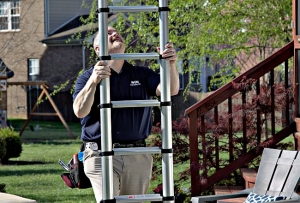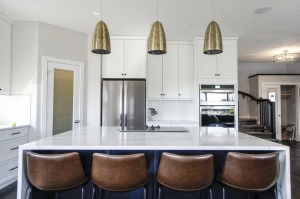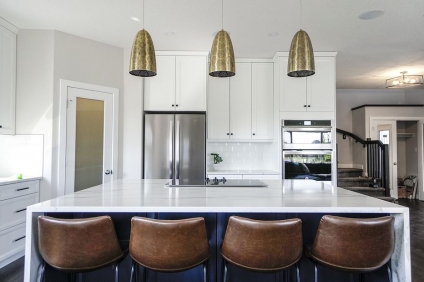The median U.S. asking rent was little changed from a year earlier for the sixth straight month as an increase in the number of rentals made it harder for landlords to boost prices
The median U.S. asking rent rose 0.4% year over year to $2,011 in September—the sixth straight month in which rents were little changed from a year earlier. That’s according to a new report from Redfin (redfin.com), the technology-powered real estate brokerage. Prior to that, rent growth had been slowing rapidly for roughly a year, coming back down to earth after a surge in prices during the pandemic.
The median asking rent fell 2% from a month earlier in September.
“Rents have flattened because a boom in apartment building in recent years has flooded the market with supply, but they haven’t yet posted a substantial decline because there’s still demand for rentals—especially as high mortgage rates keep many would-be homebuyers and sellers on the sidelines,” said Redfin Economics Research Lead Chen Zhao. “There are still a lot of apartments under construction that will continue to hit the market, which should keep rents from increasing much in the near-to-medium term. But construction has started to slow, which should eventually help bolster rent prices.”
The Number of New Apartments Hitting the Market Continues to Rise—But Construction Has Started to Slow
The number of completed apartment buildings in the U.S. rose 32% year over year to a seasonally adjusted annual rate of 433,000 in August, the most recent month for which data is available. But the number of apartment buildings on which construction has started declined 41% year over year to a seasonally adjusted annual rate of 334,000. Building starts are a leading indicator of what’s happening in the housing market, whereas building completions are a lagging indicator.
Building may be slowing, but landlords are still facing more competition than they’re used to as new rentals continue to hit the market. Sometimes, their competition is an individual homeowner who’s renting their home out instead of selling—either because they don’t want to lose their low mortgage rate, they didn’t get a good offer, or both.
“Last year, conversations with home sellers were hard. I had a lot of discussions about how they needed to lower their price expectations because the market had turned,” said David Palmer, a Redfin Premier real estate agent in Seattle. “But this year, they have a better understanding of the market. We’re now having the property management conversation earlier: ‘Do you have a rental plan if we can’t sell your home?’”
As rising rental supply leads to rising vacancies, some landlords are handing out concessions, such as a free month’s rent, to attract tenants without having to lower asking rents on paper.
That’s good news for renters at a time when the median asking rent is still just 2.1% ($43) below its record high.
The jump in supply isn’t the only factor that has caused rents to flatten; slowing household formation, economic uncertainty and affordability challenges have also contributed.
Rents Rise in the Midwest, Fall in the West
In the Midwest, the median asking rent rose 5% year over year to a record $1,436. There was also an increase in the Northeast, where the median asking rent climbed 3.1% to $2,482. Asking rents fell 1.6% to $2,413 in the West and declined 0.3% to $1,653 in the South.
The rental market has softened substantially in the West and South in part because those markets saw outsized rent growth during the pandemic. Rents skyrocketed as people flooded into Sun Belt cities including Phoenix, Miami and Dallas. But once the rental boom in those regions cooled, prices had relatively more room to fall. Apartment construction in the Sun Belt has also been especially robust, contributing to the cooldown in rents. In the West, tech layoffs have likely contributed to the region’s sluggish rental market.
While rents in the West and South have been cooling, these regions’ rental markets have started to stabilize in recent months as the impact of the pandemic price boom moves further into the rearview mirror and layoffs ease.
To view the full report, including charts and methodology, please visit: https://www.redfin.com/news/redfin-rental-report-september-2023
We design products and services with the intention of fulfilling distinct customer needs or catering to niche requirements. But as technology advances and customer needs change, we need to find new ways to tap into the ever-changing market in innovative ways. This does not have to mean we change our products entirely. It may just mean reinventing and redefining the product as well as our selling techniques to accommodate the changing industry and landscape of customer needs.
The way to increase sales and your bottom line is not to completely scrap your product and start from scratch. Equally, it is vital to not rest on your laurels and treat it like a cash cow either.
The key is to redefine old technology, systems, services, and products and turn them into future opportunities that appeal to larger audiences, other industries, and the wants and needs of your customers.
It Starts with a Change in Your Mentality
It is understandable that many businesses possess an “either/or” mentality. They feel that everything must be one way or the other, as if business is black and white.
For example, if a manufacturing company believes that a certain system or process that has been trusted for years is suddenly disrupted by some type of new technology, that old system and everything involved with it must be completely irrelevant.
The belief that as life goes on, the products of the past stay in the past and new products must take their place is severely limiting in the arena of innovation. As an Anticipatory Leader, I challenge that, as should you!
A change in your mentality around how to better your sales strategy, increase your bottom line, and foster an innovative culture at your organization actually begins with a “both/and” view as opposed to an “either/or” one. We want to have more to work with than before, as this creates an environment where creative critical thinking knows no bounds!
“Both/and” is a powerful corrective strategy that shifts our mentality from thinking the future will be either one way or the other and shows us that there is room for imagination in innovation, which leads to abundance and sales. Thinking of the past as singular is a limited perspective that does in fact lead to missed future opportunities.
Slack Thrives in a “Both/And” World
Slack is a great example of a company that aimed their sights on a “both/and” mindset to increase sales.
Slack is a powerful tool that allows employees to collaborate and strategize instantaneously for better organization and communication. It is a game changer for business communication, but what is it exactly?
In its most basic form, Slack is a chatroom, and chatrooms have been around since the early 2000s, with a focus on instant communication for friends and family. Are chatrooms still popular today? Not widely, especially with regard to the quantity of texting we do, social media messaging, and even the likes of remote work environments like Basecamp.
But instead of leaving chatrooms in the past as though they are archaic and out of date, Slack adapted the concept and redefined it for a new audience, and in turn, it has become one of the most successful business tools spanning several industries!
Plus, if you consider the concept of instantaneous communication between friends via a chatroom, without that technology and the market for it, there wouldn’t be Slack, Basecamp, and the culture that exists today.
Think Opposite to Find Overlooked Advantage
Your products and services have long had their intended purposes, and for your base customer segment, this purpose may fill their need today. But while you are filling this need, so are your competitors with a similar product or a similar service. There is even the chance and likelihood that they are working on something better.
On some level, this just becomes a battle of affordability. With no differentiating qualities, the only differentiating factor is price, and this is a slippery slope to fall down that does lead to stagnated sales.
But if you want to avoid that sales slump and take competitive advantage away from competitors, becoming the positive disruptor your industry needs, you must ask yourself: What should I do to differentiate and stand above the competition?
If it has become a battle of attrition to the top, it is time for you to go opposite!
To gain insight into what is beneath the surface of your product or service and redefine their capabilities as well as the value you deliver, take note of where everyone else is looking and look in the opposite direction. Then, ask yourself the following questions:
- Could my product aid those in another department?
- Could it do something more or else for my customers?
- Can it impact the effectiveness of the company or another industry in some way?
For instance, augmented reality (AR) and virtual reality (VR) are well established in the gaming sector, but we have determined that these two technologies can do so much more!
In recent years, VR has been used as a medical professional training platform. By providing interactive, three-dimensional surgical simulations, it enables students to gain vital knowledge for more accurate diagnoses and improved surgical outcomes. The aerospace industry is also using VR to train pilots with real-life situations for safer and more efficient flights.
The point here is that your product or service can offer far more for more customers than you realize. Part of your roadmap to a redefined sales strategy is through redefining a product or service, a powerful strategy that opens so many doors. Redefine the product, redefine the mentality of your salespeople, and redefine your growth!
Remember That You Are Selling More Than Just a “Thing”
Before leveraging my “both/and principle” and the concept of going opposite to redefine your offerings and sales strategy, let’s shift the focus back to your sales force once more.
One major missed opportunity I find when helping an organization move to an anticipatory mindset that establishes growth is that when asked, many salespeople admit that they get the sale, deliver the product or service, and then wash their hands of the transaction to move on to the next sale.
This is where you actually lose competitive advantage.
Remember, it is always easier to get a new sale from an existing customer than it is to obtain a completely new customer every time. Successful businesses are built on lasting relationships, and lasting relationships are built on trust. Trust is not something that can be automated by any type of disruptive technology, no matter how streamlined it is.
Trust is built by your sales team by learning all they can about the customer and providing streamlined solutions, redefined products or services, and a quality customer experience from start to finish, even if they have been with you since day one. You are not selling a product or service — you are selling an experience. Is it positive? If so, how?

From buying and selling advice for consumers to money-making tips for Agents, our content, updated daily, has made Realty Times® a must-read, and see, for anyone involved in Real Estate.














